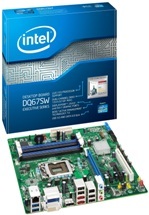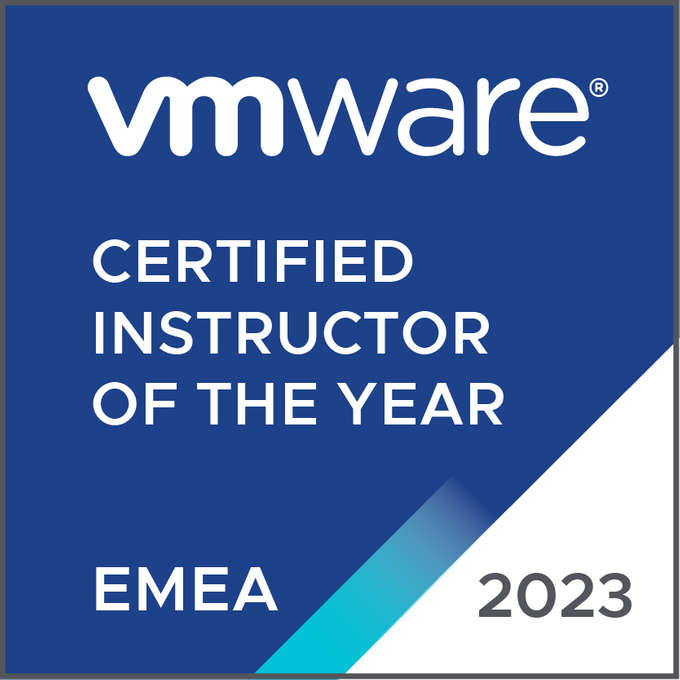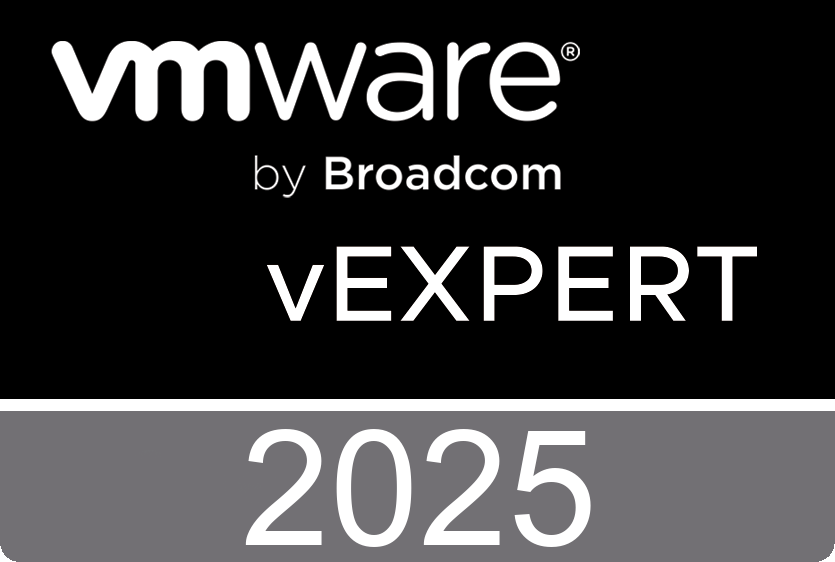 VMware Compatibility Guide 2.0 Preview is now available, including the enhanced user interface and navigation with additional features and enhancements.
VMware Compatibility Guide 2.0 Preview is now available, including the enhanced user interface and navigation with additional features and enhancements.
Rick Blythe over at VMwarewolf reports:
VMware has rolled out a new and improved compatibility web page. It is hoped this makes it easy to find compatible systems, I/O devices, storage and guest operating systems. The 2.0 guide offers an enhanced look & feel, improved performance and new program information. The final preview is available now at this link.
http://partnerweb.vmware.com/comp_guide2/search.php
Tuesday, May 31. 2011
VMware Compatibility Guide 2.0 Preview is now available
New Publication - Exertion-based Billing for Cloud Storage Access
Charging for cloud storage must account for two costs: the cost of the capacity used and the cost of access to that capacity. For the cost of access, current systems focus on the work requested, such as data transferred or I/O operations completed, rather than the exertion (i.e., effort/resources expended) to complete that work. But, the provider’s cost is based on the exertion, and the exertion for a given amount of work can vary dramatically based on characteristics of the workload, making current charging models unfair to tenants, provider, or both. This paper argues for exertion-based metrics, such as disk time, for the access cost component of cloud storage billing. It also discusses challenges in supporting fair and predictable exertion accounting, such as significant inter-workload interference effects for storage access, and a performance insulation approach to addressing them.
 http://labs.vmware.com/publications/exertion-based-billing
http://labs.vmware.com/publications/exertion-based-billing
New Website Launched! - vBeers where vGeeks Come to Meet
Simon Long and Simon Seagrave have launched a new website today. The website is called vBeers and was created to provide an opportunity for virtualization enthusiasts and professionals to meet and enjoy discussing all things virtualization and anything else in the world of tech.
Simon Long:
vBeers was created as a non-commercial event and is intended as something for the virtualization community by the community. Despite the reference to beer in the name vBeers isn’t about just drinking beer but in fact encompasses all beverages alcoholic or non-alcoholic, it really doesn’t matter as the focus of vBeers is all about the socializing, meeting others and having a good conversation or two in a pleasant social setting.
vBeers meet ups are in no way intended to be exclusive to a particular virtualization hypervisor vendor and as such is open to everyone, so whether you are a VMware vSphere, Microsoft Hyper-V, Citrix XenServer user/fan or none of the above it really doesn’t matter as “it’s all about the virtualization”.
vBeers.org is the place where vGeeks arrange their own worldwide vBeers meet-ups.
Friday, May 27. 2011
vSphere Home Lab - Intel Desktop Board DQ67SW supports 32 GB
 When you’re building a new home lab or adding a new white box to your private cloud, you want to put as much memory into your servers as you can. It’s the same story as in most of the datacenters, CPUs are idling while your ESX servers are running out of memory. Intel has released a new chipset that might be worth a closer look. The Intel Desktop Board DQ67SW supports four 240-pin DDR3 SDRAM Dual Inline Memory Module (DIMM) sockets which can hold 8 GB each. That means 32 GBs of system memory based on DDR3 1333 or 1066 MHz DIMMs on one board.
When you’re building a new home lab or adding a new white box to your private cloud, you want to put as much memory into your servers as you can. It’s the same story as in most of the datacenters, CPUs are idling while your ESX servers are running out of memory. Intel has released a new chipset that might be worth a closer look. The Intel Desktop Board DQ67SW supports four 240-pin DDR3 SDRAM Dual Inline Memory Module (DIMM) sockets which can hold 8 GB each. That means 32 GBs of system memory based on DDR3 1333 or 1066 MHz DIMMs on one board.
Based on the latest Intel® Q67 Express Chipset with Intel® vPro™ technology, Intel® Desktop Board DQ67SW is designed to showcase the superior performance quality of the 2nd generation Intel® Core™ vPro™ processor family, enhance office productivity, and lower the total cost of ownership for your business PCs with the newest Intel® Active Management Technology (Intel® AMT) 7.0.
Designed with exceptional stability and compatibility, Intel Desktop Board DQ67SW equipped with the latest SuperSpeed USB 3.0 and SATA 6 Gb/s ports with RAID support. Dual independent display capability with DisplayPort and dual DVI ports.
Thursday, May 26. 2011
Video - How to move your VMs to BlueLock’s vCloud Datacenter
Deploying a new VM in the vCloud is very easy. Just go to your Catalog, select one of your vApps Templates and choose “Add to My Cloud”. But what if you want to move an existing virtual machine from your local vCenter server or private vCloud to BleuLock’s vCloud Datacenter? It’s also very easy. Launch the vCloud Connector from your vSphere client and move your existing virtual machines wherever you want.
 The VMware vCloud Connector is a free plug-in that will allow VMware vSphere administrators to immediately begin deploying and managing virtual machines across VMware vCloud Powered cloud services from within the VMware vSphere Client. In this video I’ll show you how to configure both the vCenter server and the vCloud Director address and how to upload a virtual machine to BlueLock’s vCloud. Once you virtual machines are running in the BlueLock’s vCloud Datacenter, administrators can use the vCloud Connector to perform the following operations:
The VMware vCloud Connector is a free plug-in that will allow VMware vSphere administrators to immediately begin deploying and managing virtual machines across VMware vCloud Powered cloud services from within the VMware vSphere Client. In this video I’ll show you how to configure both the vCenter server and the vCloud Director address and how to upload a virtual machine to BlueLock’s vCloud. Once you virtual machines are running in the BlueLock’s vCloud Datacenter, administrators can use the vCloud Connector to perform the following operations:
- See a list of virtual machines, vApps, virtual machine templates, and vApp templates on vSphere and vCloud Director-based private and public clouds (including vCloud Datacenter Services).
- Copy virtual machines, vApps, virtual machine templates, and vApp templates between vSphere and vCloud Director-based private and public clouds.
- Perform basic operations (for example, power on/off, suspend, reset, delete) on virtual machines and vApps in vSphere and vCloud Director-based private and public clouds.
- Deploy vApp templates as vApps (fenced mode) in vCloud Director-based private and public clouds.
- Access vCloud vApp consoles
- Directly launch the vCloud URL
Wednesday, May 25. 2011
Register for the VCP4-DT exam before September 1, 2011 and take advantage of the $50 discount
The second tier of the latest VMware Desktop certification program, VMware Certified Professional 4 – Desktop (VCP4-DT), is now available.
VMware Certified Professional 4 – Desktop (VCP4-DT) is directed toward Virtualization Systems Engineers who seek to demonstrate their ability to install and configure the VMware View environment and enable View Client users. Candidates must also be able to configure the vSphere environment, possess a deep understanding of VMware core components and their relation to storage and networking and be proficient in datacenter design methodologies.
VMware Desktop Certification Overview
VMware Certified Associate 4 – Desktop (VCA4-DT) is the first step toward gaining expertise in desktop virtualization and earning the respect and recognition that comes with being VMware Certified. There are no course requirements in order to take the exam. Learn more and register today.
VMware Certified Professional 4 – Desktop (VCP4-DT): After earning your VCA-DT and VMware Certified Professional on vSphere 4, you are ready to take the VCP4-DT exam. If you meet the pre-requirements, register for the VCP4-DT exam before September 1, 2011 and take advantage of the $50 discount. Learn more and register today!
Coming Soon: VMware Certified Advanced Professional – Desktop (VCAP-DT): is directed toward Virtualization Architects who seek to demonstrate their deep knowledge of VMware vSphere and VMware View design. Candidates will be able to expertly manage all aspects of the vSphere and View environments from installation and configuration to maintenance and troubleshooting. Candidates will also possess a deep knowledge of virtualization architectures and components and be able to architect VMware desktop solutions to meet specific customer business requirements.
http://mylearn.vmware.com/mgrReg/plan.cfm?plan=21427&ui=www_cert
Thursday, May 19. 2011
VMware Labs present its latest fling - InventorySnapshot
VMware Labs present its latest fling InventorySnapshot. InventorySnapshot is a useful tool that allows user to "snapshot" a given vCenter inventory configuration and then reproduce it. Inventory includes datacenter folders, datacenters, clusters, resource pools, vApps, hierarchy, roles and permissions, configuration settings, and custom fields. If you have an inventory with a given set of hosts and VMs organized into a group of clusters, InventorySnapshot will reproduce the complete environment, including cluster settings and any custom roles you may have defined.
Be one of the first one to try, rate and comment - http://labs.vmware.com/flings/inventorysnapshot
To learn how to run InventorySnapshot, read this document.
Coming Soon from VMware Press
VMware Press (Twitter @VMwarePress) is the official publisher of VMware books and training materials that provide guidance for the critical topics facing today's technology professionals and students. With books, certification and study guides, video training, and learning tools produced by world-class architects and IT experts, VMware Press helps IT professionals master a diverse range of topics on virtualization and cloud computing, and is the official source of reference materials for completing the VMware Certified Professional (VCP) Examination.
Storage Design and Implementation in VMware vSphere 5.x
By Mostafa Khalil • Technology Deep Dive • Fall 2011
 In this technology deep dive book, expert architect Mostafa Khalil teaches everything an administrator or architect needs to know about design, management and storage maintenance in the vSphere 5.0 virtual environment, including detailed procedures and guidelines, architectural design elements, best practices, common configuration details, and more.
In this technology deep dive book, expert architect Mostafa Khalil teaches everything an administrator or architect needs to know about design, management and storage maintenance in the vSphere 5.0 virtual environment, including detailed procedures and guidelines, architectural design elements, best practices, common configuration details, and more.
Administering VMware SRM 5.x
By Mike Laverick • Technology Hands-On • Fall 2011
 In this practical and technical guide to installing and configuring VMware's Site Recovery Manager 5.0, expert Mike Laverick takes readers through set-ups for multiple vendors, disaster recovery, common pitfalls and errors, while along the way explaining why things happen, and how to fix them.
In this practical and technical guide to installing and configuring VMware's Site Recovery Manager 5.0, expert Mike Laverick takes readers through set-ups for multiple vendors, disaster recovery, common pitfalls and errors, while along the way explaining why things happen, and how to fix them.
Automating Day-to-Day Administration of VMware vSphere 5.x
By Cody Bunch • Technology Hands-On • Fall 2011
 This hands-on technical guide to automating vSphere with Orchestrator teaches administrators how to save time and resources by automating their virtual infrastructure. Automation expert Cody Bunch teaches valuable practices and tool use through a combination of real world automation examples and case studies.
This hands-on technical guide to automating vSphere with Orchestrator teaches administrators how to save time and resources by automating their virtual infrastructure. Automation expert Cody Bunch teaches valuable practices and tool use through a combination of real world automation examples and case studies.
Via Scoopmeister Duncan Epping over at Yellow-Bricks :-)
Wednesday, May 18. 2011
How much time takes your browser to boot Linux? - Javascript PC Emulator
 Fabrice Bellard has created a PC emulator written in Javascript. The emulated hardware consists in:
Fabrice Bellard has created a PC emulator written in Javascript. The emulated hardware consists in:
• a 32 bit x86 compatible CPU
• a 8259 Programmble Interrupt Controller
• a 8254 Programmble Interrupt Timer
• a 16450 UART.
The code is written in pure Javascript using Typed Arrays which are available in recent browsers. It was tested with Firefox 4 and Google Chrome 11 on Linux, Window and Mac (it does not work with Chrome 12 beta, it is a bug in the browser). In any case, a fast Javascript engine is needed to have good performance. Fabrice has compiled a 2.6.20 Linux kernel . An uncompressed kernel image is used instead of a compressed one to have a faster boot. It is generated with "objcopy -O binary vmlinux vmlinux.bin".
Javascript PC Emulator - Technical Notes
http://bellard.org/jslinux/ <- How much time takes your browser to boot Linux?
Tuesday, May 17. 2011
VMware Horizon App Manager - Retaining Control and Visibility and Ensuring Compliance
Enabling a new way to work in the cloud, VMware announced on May 17, 2011, VMware Horizon App Manager -- establishing an open, user-centric management service for accessing cloud applications and services from any device, where and when a user needs it.
http://www.vmware.com/products/desktop_virtualization/horizon/



